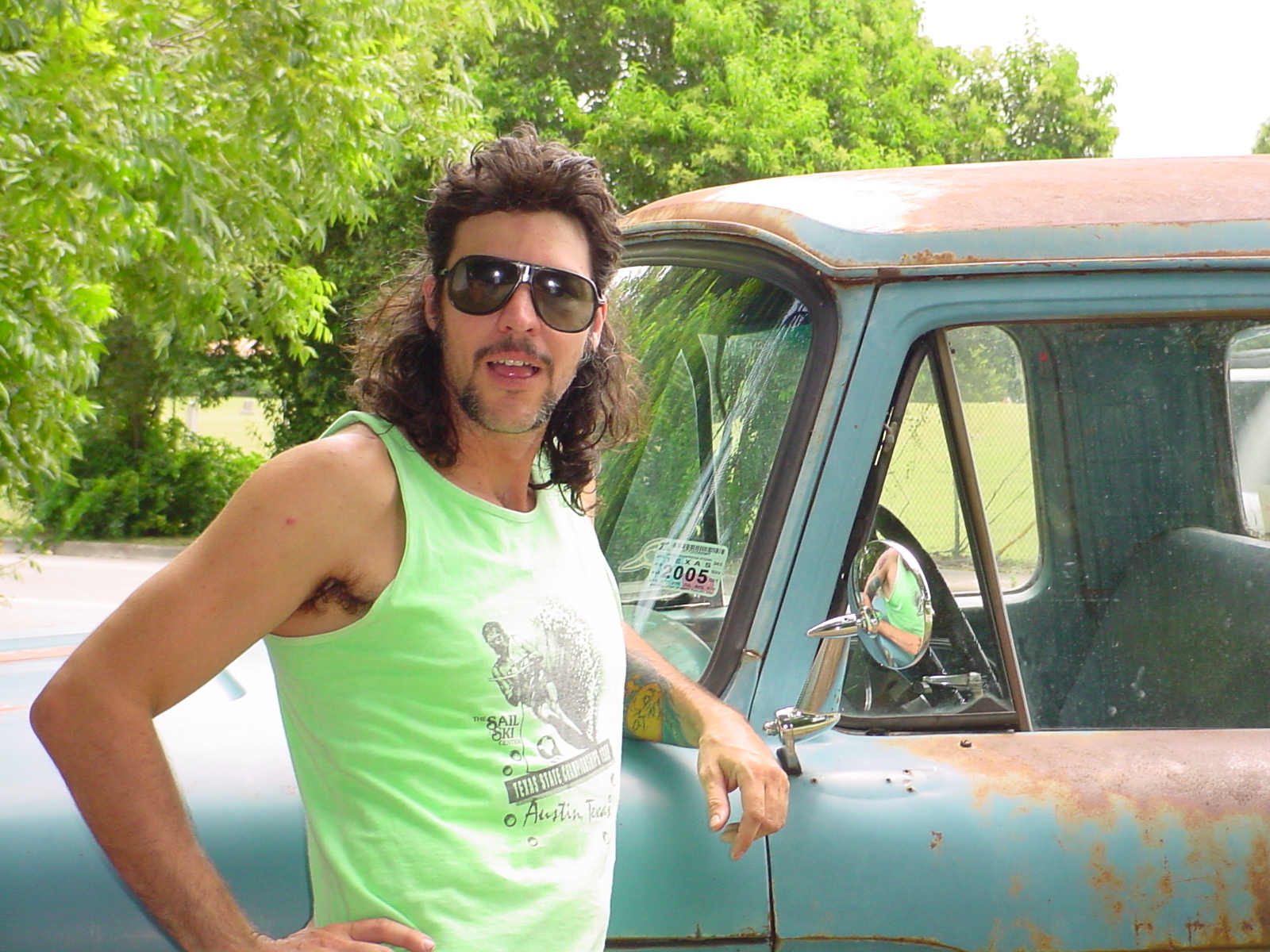EtymologyAccording to the Oxford English Dictionary, the term mullet was "apparently coined, and certainly popularized, by U.S. hip-hop group the Beastie Boys",[1] who used "mullet" and "mullet head" as epithets in their 1994 song "Mullet Head".[2] Their fanzine, Grand Royal Magazine, was the first to use the term in print.[1] In Scandinavia (Swedish: hockeyfrilla; Norwegian: hockeysveis; Finnish: takajeejee ), Canada, and the northern United States, the hairstyle is known as "hockey hair" or "hockey player haircut", as it was common among their ice hockey players in the 1980s. [edit]History[edit]The mullet in the Classical PeriodThe Sixth Century historian Procopius' Secret History describes the actions of some of the Blue faction:
[edit]First popular appearanceThe modern mullet began to appear initially in the late 1960s, Welsh pop singer Tom Jones sporting one. Glam rock artist David Bowie wore a proto-mullet in the early 1970s. Florence Henderson featured a mullet in the opening sequence of the television sitcom The Brady Bunch (1973–4 season), Paul McCartney sported a mullet throughout the 1970s. The hairstyle achieved further popularity in the late 1970s and 1980s among entertainers with receding hairlines such as Anthony Geary of "Luke and Laura" fame from the soap opera General Hospital, and the rock performers Michael Bolton and Phil Collins. [edit]1980sAs the 1980s progressed, big and bouffant mullets increased in popularity, and like other popular hairstyles at the time, often included spiking or blond highlights.Bands such as Kajagoogoo, Duran Duran and others, sported them and were labeled "Hair Bands." Many individual artists also embraced the cut. Limahl, Billy Ray Cyrus and David Bowie are a few, made famous by their outrageous hair. Australian Rules footballers were instrumental in establishing the popularity of the mullet in Australia. Notable players included Warrick Capperand Dermott Brereton. The mullet is well known and widely remembered in Germany, where it is known as the "Vokuhila", which is an acronym for "vorne-kurz-und-hinten-lang" or "short in front and long in back". The stereotypical German image of the mullet is epitomized by 1980s soccer teams and their fans, as well as by the ubiquity of the hairstyle in images dating from the fall of the Berlin Wall. This fact has led to an unfortunate tendency to associate the mullet with negative stereotypes of the former East Germany, which is probably not fair, as the hairstyle was also popular in West Germany and elsewhere at the time. The zenith of the mullet's popularity in 1980s continental Europe has been described as an "age of singing tattooed Swedish Flokati Rugs".[4] Richard Dean Anderson wore a mullet in the title role of the popular TV series "McGyver." [edit]1990sIn the mid to late '90s the "tail" of the mullet was occasionally "permed" with loose or tight curls adding even more internal composition contrast to the hairstyle.[citation needed] Punk rock band The Vandals sang of country music singers and Jerry Springer Show guests sporting mullets, and listed regional names for the style in the 1998 song "I've Got an Ape Drape".[5] Country Music singer Billy Ray Cyrus was also known for his mullet. [edit]2000sThe mullet and its associated lifestyle have been central themes in movies such as Gummo (1997), Joe Dirt "business in the front party in the back" (2001), and the television show The Mullets (2003-2004). The mullet remains a moderately popular hairstyle among certain social groups in various Western countries — Spain most especially. In the U.S. andCanada, the mullet is particularly associated with blue collar men, fans of country and heavy metal music, and ice hockey players. In the United Kingdomthe mullet is most commonly associated with thugs, Pat Sharp or with professional footballers. In Australia the haircut is associated with Bogans and NRL players, particularly those from the 1980s, as well as Lebanese-Australian youths. Jared Allen of the Minnesota Vikings has a recognizable mullet. In Sweden it is referred to as "hockeyfrilla" (hockey-cut) - perhaps because many Swedish hockey players played in Canada and adopted the hairstyle. In Finland mullet is sometimes called "lätkätukka" (hockey hair) or "tšekkitukka" (Czech hair), the latter a likely reference to Czech-born NHL hockey star Jaromir Jagr, who during his glory years wore a curly mullet long enough to obscure his jersey number. Although somewhat anachronistic, notable thespian Matthew James Norton has also been lauded for popularizing an alternatively styled mullet where the lengthened hair at the back of the head is purposely curled and shaped into a duck tail known as the Curly Murly. Singer Billy Ray Cyrus was also known for his distinctive mullet and frequently jokes about it on the American television show, Hannah Montana. One episode had his character "impersonating" his real-life counterpart by donning a fake mullet. [edit]2010sIn July 2010, the Islamic regime of Iran issued grooming guidelines to men supplementing the existing modesty stipulations to women. Among the new regulations is a ban of the mullet hairstyle. The ban on mullet is one of the measures that Iran has deployed to "confront the cultural assault by the West". The regime aims to promote a set of new Islamic hairstyles that were unveiled at the Hijab and Chastity Festival of 2010. |
Friday, 10 September 2010
Keywords: fashion, style, hair, eighties, pablo escobar, sugar
The mullet is a hairstyle that is short at the front and sides, and long in the back. [1] Often ridiculed as a lowbrow and unappealing hairstyle, the mullet began to appear in popular media in the 1960s and 1970s but did not become generally well-known until the early 1980s. It continued to be popular until the mid 1990s and has enjoyed a partial return to favor as a retro look in the 2000s.[citation needed]
Subscribe to:
Post Comments (Atom)





No comments:
Post a Comment